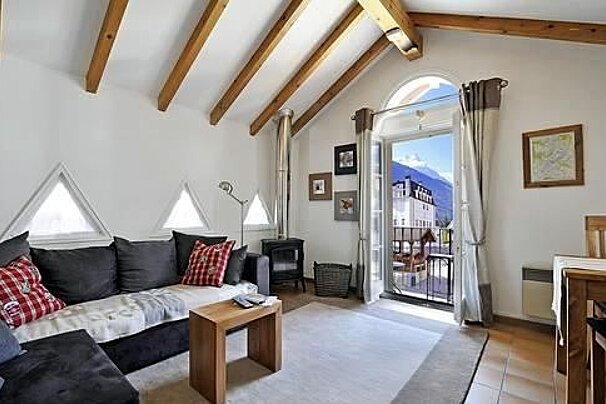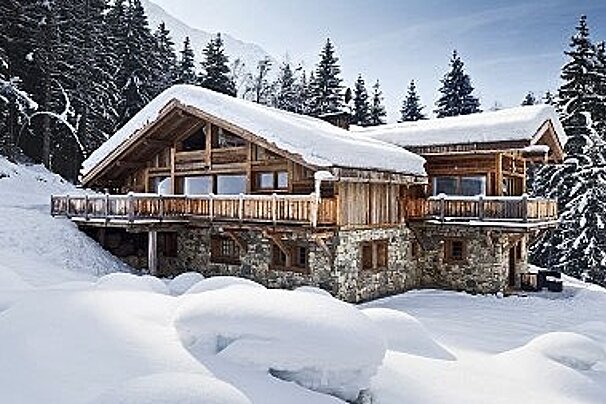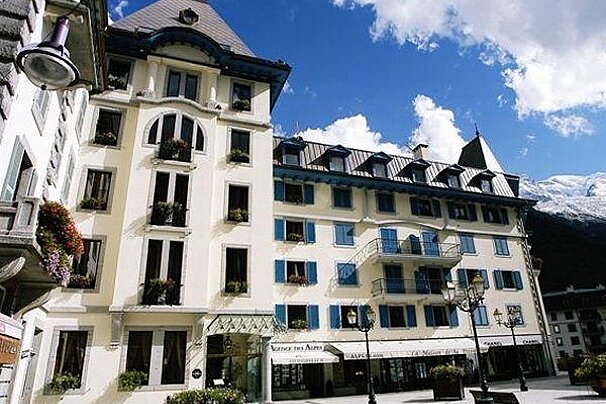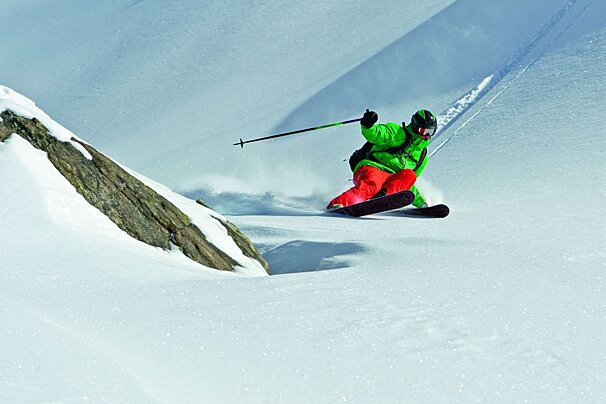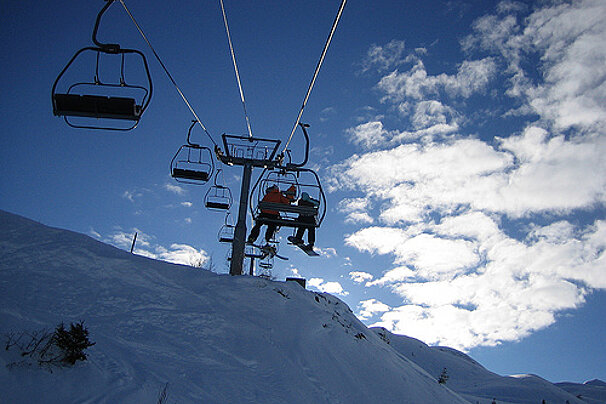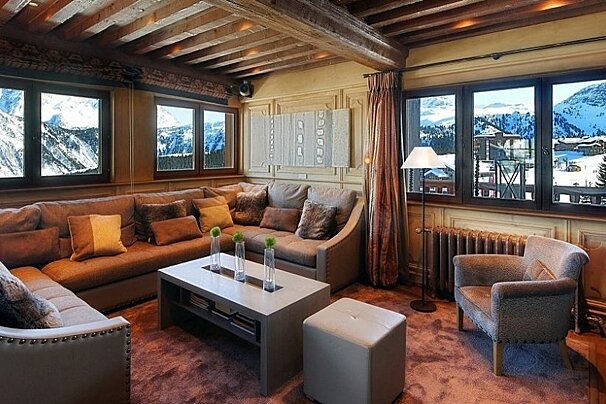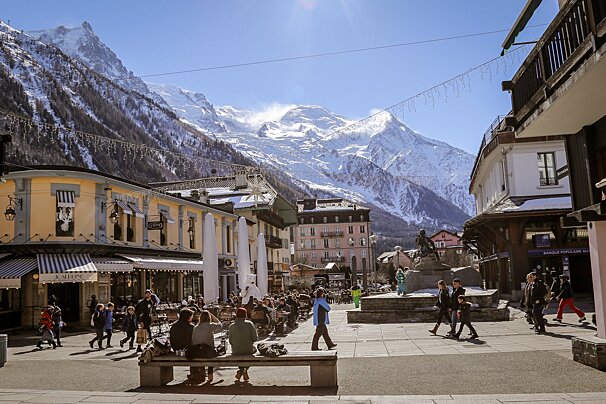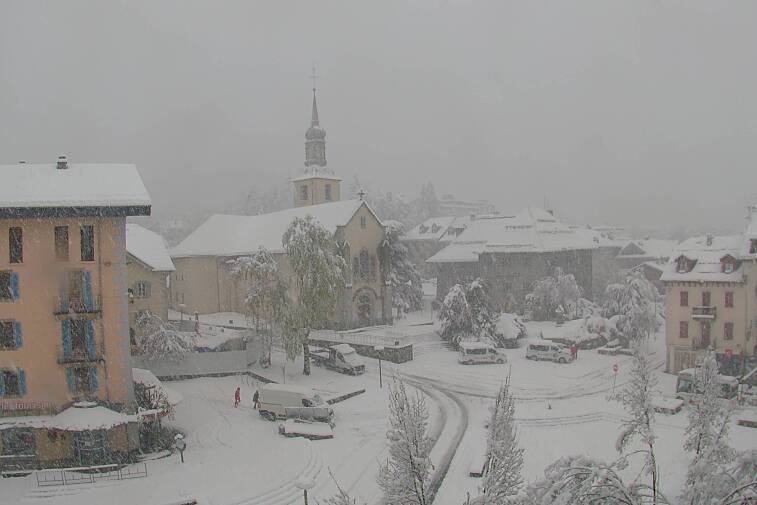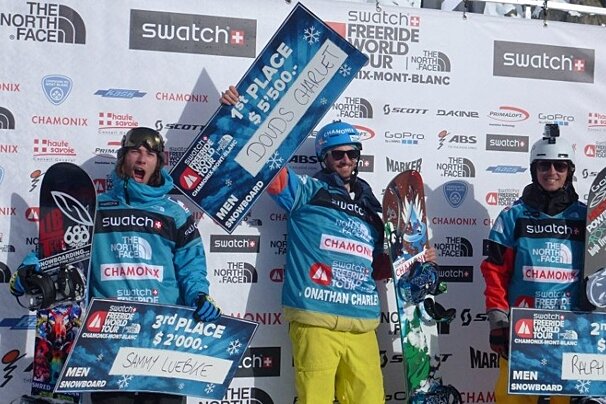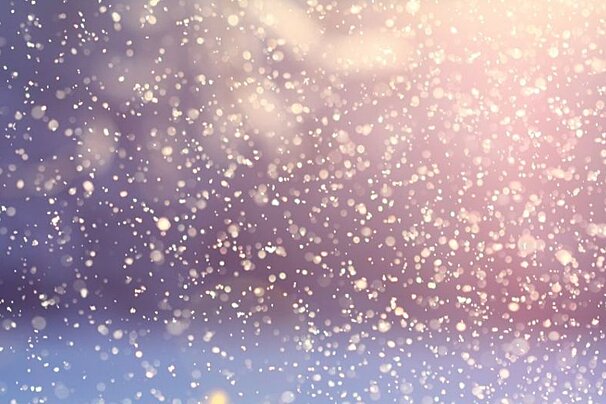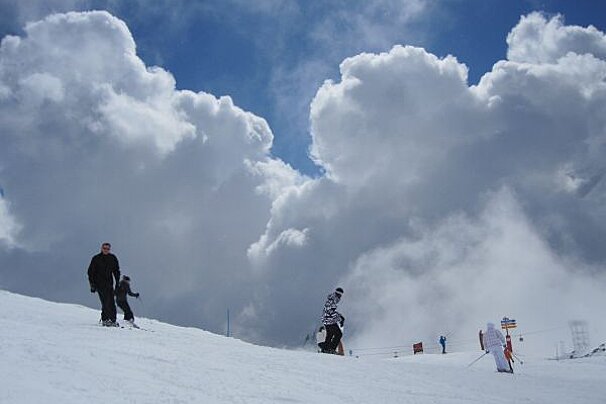Florence Kielholz: Owner / Manager of Les Chalets de Florence
Step back in time & learn about the man who built these unique Alpine chalets & the family of the woman that now owns them
Just a short walk from the centre of Chamonix on a little side road to Route des Pecles are two very unique chalets with a very interesting history. They've been in Florence Kielholz's family for over 50 years now, and she's got some fascinating family history to share including that of the Polish mountaineer, Henri Muckenbrünn, who originally built and hand-carved a lot of the woodwork in the chalets.
Florence Kielholz talks me through the history of the chalets, her mother's history as a champion skier and war-time work for the Resistance, her own exploits skiing down Mont Blanc (when heli-skiing was still allowed) and what you can expect if you come to stay in one of her very individual chalets.
Tell us about your family history and what brought you here?
"My mother's family were quite wealthy from the silk industry in Lyon, where there used to be a big fabric industry. My grandfather was an engineer, wealthy enough to afford 5 Bugatti cars in his life and a Tiger Moth bi-plane. My grandmother was very sporty, petite but with a lot of drive and character. She played field hockey and took part in artistic [figure] skating. She was also an outstanding mountaineer - she climbed Mont Blanc, the Aiguille Verte, which you can imagine was quite a feat in the early 30's."
"Before the war in 1931, my grandfather died in an accident, and she was left supporting four children on her own. One of the two boys suffered from asthma and so the family moved to Chamonix to benefit from the clean mountain air. In wartime, the Germans had their officers stay here to recuperate and recover from injury in what is now the the Richmond Hotel. [Another interesting wartime fact - did you know that the factory under the viaduct on the way into Chamonix used to be an explosives factory called 'Cheddite' hence the name of the village down there 'Chedde'. Had the factory been blown up by German bombers access to Chamonix from this direction would have been cut off].
"My grandmother was very sporty. She was a founding member of the Chamonix golf club, tennis club and belonged to the lobby for getting the Aiguille du Midi lift installed [Florence has some of the original letters and correspondence that her grandmother wrote and received]. She was very courageous, and hid some Jewish people in her house as well as helping some of them escape over the border with a guide into Switzerland during the war."
"My mother [Colette Schmit] was the oldest of her four siblings and although she was quite quiet in comparison to her [daring] mother, she was involved in passing messages on behalf of the Resistance, with notes sewn into her clothing, cycling all the way to Sallanches and back to deliver the messages. In later years she joined the first French International ski team in Chamonix (see picture above) in 1936-37, and then tragedy struck again as one of her brothers was killed in a mountaineering accident in Chamonix at the Aiguille du Peigne when he was 18. My father was a 'sous-prefet' for Montpellier during the war and [at some point] also became involved in the Resistance, using his position and information available to him to help, amongst others, a well-known family escape from the German forces".
You seem to have followed in your mother & grandmothers footsteps with big mountain skiing?
"When I started skiing, we used to go to Grands Montets but at that time it was quite rocky and not as well groomed as you find in the ski areas these days. I joined the Chamonix ski club and did very well in slalom racing, better in fact than some of the children who had proper race training! The ski coaches recognised that I was a very good skier and invited me to join their year round training programme, which I did. I was around 15 years old at the time and during the week I attended a boarding school near Sallanches, which was very tough but taught us all some very good values".
"Back in around 1978 when heli-skiing was still allowed in Chamonix, I skied Mont Blanc around 6 or 7 times from helicopter drops. One time in Spring 1978, we were at the plateau of the Glacier des Bossons when we saw a group skiing down the north face of the Dome de Gouter. When they came closer we realised it was the then President of France, Valéry Giscard d'Estaing and a his guides - you'd never get the President of France doing that today, even if they were a good skier, it's far too dangerous! Even the best freeride skiers don't do it now!"
The man who built the chalets was an interesting character. Tell us a bit about him?
"Henri Muckenbrünn (Muck) was from Zakopane, a ski resort which where the 2nd Olympic Winter Games took place in 1936. Zakopane is a mountain village very well known for its wood artwork, hand carved and painted wood. 'Muck' arrived in Chamonix at the time of the first winter Olympics in 1924, when Alpine skiing hadn't really taken off and ski jumping, bobsleigh and figure skating were top of the agenda. 'Muck' was a ski jumper himself, and fell in love with the Chamonix valley, spending the rest of his life here. He became a mountain guide, ski instructor and played tennis. At this time, the social concept of holidays didn't really exist as it does today. Wealthy families would come here for the mountain air and to enjoy mountain sports for months at a time, often staying in one of the 'Palace' hotels such as the Grand Hotel des Alps, with which 'Muck' was affiliated. My grandmother arrived in Chamonix on a similar trip around this time at the Hotel des Alpes".
Muck hand carved pretty much all the wood you can see in the main chalet, and his influence on the look and layout of the chalets is hard to miss. There are intricate wood carvings on the outside and interior walls, doors, ceiling struts and panelling. Florence tells me the original design of the larger chalet was so dark, that when they took ownership of it they had to install 7 new windows to let more light in. The buildings and the woodwork take a lot to maintain, and she calls it a 'love story' looking after them, with all the modernisation, renovation and maintenance that's taken place over the years. Now both chalets are fully modernised, with all the mod cons, satellite TV, beautifully fitted modern bathrooms and everything you'd expect to find in a self-catered rental. Florence's parents bought the current two chalets and one neighbouring after Muck's death in the 1960's and the chalets have been in her family ever since.
So apart from the wood carvings and unique decor, what sets them apart from other chalets in the area? Are they available all year round?
"Mostly yes, apart from the larger chalet which isn't available in the summer to winter interseason. The chalets are set in a wonderful location, with 360 degree views from the garden and at this time of year the light is great, and the mountains often have a fresh, sugary dusting of snow on them. Quite a lot of people ask me if the chalets sleep more than two people, but they don't although I tell them that they're welcome to have a friend stay in the larger chalet, but it will be on the sofa. I can offer people a concierge service, or guests can make their own plans. I can also lend a baby cot and a high chair if people wish. A fellow called Philippe Convers also offers a Private Chef service for either chalet. At this time of year the resort is relatively quiet but there is still lots of hiking and cycling to be done. If you want to avoid the busy crowds of July & August, now is the perfect time to visit, and either of the two chalets would make a charming place to stay for a honeymoon couple".
-
Florence is an avid animal lover, so if you would like to stay with your animal companions, they're more than welcome. Deer have been known to arrive in the garden over winter, which Florence loves, and you might also get to meet her own dog and two cats. She's fond of leaving a jar of home made jam for you to eat, made from fruit in her organic vegetable garden and you can ask her about taking a cookery class while you're staying in one of her chalets.
The chalet and the mazot both sleep two people and are set in a quiet location but still only 5 minutes walk from the centre of Chamonix.




















